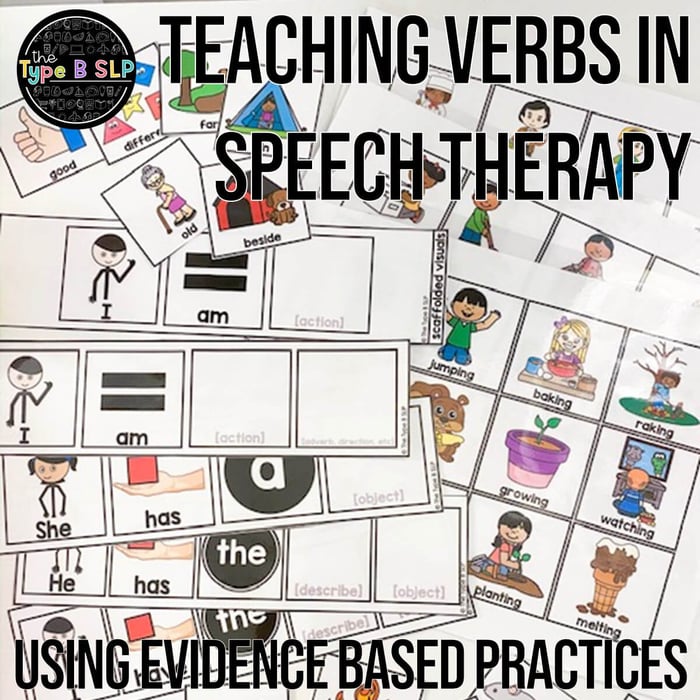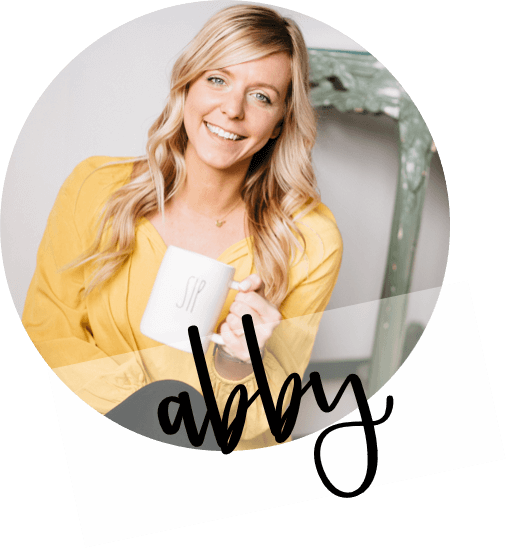
Teaching Verbs in Speech Therapy: MORE, Not Less
When teaching verbs in speech therapy, do you ever just think: "How in the world am I going to teach ALL these verbs?"
Let me help!
When it comes to teaching verbs in speech therapy... Less is NOT more: According to Plante et al. (2014) when learning new morphemes, research supports providing a variety of different examples, rather than focusing on a small sample. The target should be the thing that’s held consistent (e.g. present progressive -ing) while all the other words around it vary. Repeating input, even just once, provided no benefit. Therefore, when teaching verbs of any tense, it's important to keep your target consistent, for example "target pronoun" (he/she) + "is" + present progressive -ing. Now, just mix up those verbs! Provide a TON of examples to practice your target goal.
Need more convincing? Plante et al. (2014) hypothesized that when there is high lexical variability, children focus on the aspects of the utterance that are the most stable. For instance, when teaching the pronoun “she,” and providing a variety of different verbs, the child might focus most on the target she, and learn it more quickly. Thus, grammar intervention should contain more variety, not less.
How do I know what verbs to target? Where will I get all these verbs from?
My biggest tip: Once you've gathered your book(s), materials, games, resources for your lesson... write down a list of 20-25 accompanying verbs that align with those items!
How does this look in therapy?
Hoover et al (2013) conclude that children can learn new verbs from simultaneous examples ( two side by side videos/images of the same action performed on different objects), as long as the examples vary. This method may help children to bypass the tendency to focus more on the object than the action.
Snape, S., & Kritt, A. (2018) found that children were able to extend verbs correctly after viewing two action-scenes in which the content varied (i.e. a video of a girl throwing a ball next to a video of a dad throwing a baby in the air). Their findings suggest that simultaneously presented examples of a verb can support verb learning, but only when the content of the examples varied.
In summary... we need to be ready with a lot of examples!
YouTube videos are a great way to provide multiple examples using different items/actions/people! There are tons of videos of kids playing, opening toys, using pretend play... these will all be great conversation starters for targets various verbs and grammar goals!
Here are a few YouTube channels I love using for these purposes!
(be sure to preview any and all videos before use!)
Toys and Colors (pretend play)
Hi Ho Kids (kids doing funny things)
Blippi (upbeat character on adventures)
Maddie Moate (girl/family on adventures)
The Icing Artist (woman who makes amazing cakes)

Read aloud books are also a great way to target verbs. Talk about what the characters are doing in the story, or even have students act out things from the story, while other students talk about what he/she is doing. Targeting past tense words? Finish reading the book, and make a timeline of events from the story together, using your past tense verbs throughout.
I also like using blank sentence strips during all of my grammar activities, filling in our sentences with different characters and items that showcase the same verb. For example, a boy eating a bowl of cereal may use a visual of a girl eating a watermelon in order to provide varying examples of each verb. Or, using sentence strips with verb photos from my Mega Visuals Pack alongside books and videos to showcase various verbs with different people and items.

If you prefer themed therapy like myself, work on a list of verbs that align with TONS of different themes. Start with your theme (i.e. cooking, beach, gardening, etc.) and jot down verbs that go with each theme. Now you can simply grab your list when working on that theme, and you have that HUGE variety of verbs that we need, all ready to go! (Pssst... I have a freebie coming very soon that does this work for you! Subscribe to my email list here so you don't miss it!)
Leave a comment with some of your common struggles with teaching verbs, or grammar in general! I have so much more information to share!
Thanks for being here,

Pssst...I have a resource for that!
Grab my Teaching Verbs Boom Cards, where I take ALLLL this research, and turn it into a complete product for you. Evidence based strategies without all the extra work!
References
Plante, E., Ogilvie, T., Vance, R., Aguilar, J.M., Dailey, N.S., Meyers, C., … Burton, R. (2014). Variability in the language input to children enhances learning in a treatment context. American Journal of Speech-Language Pathology. Adapted from The Informed SLP, theinformedslp.com
Hoover, J. R. & Storkel, H. L. (2013) (Grammatical treatment and specific language impairment: Neighbourhood density & third person singular -s. Clinical Linguistics and Phonetics). Adapted from The Informed SLP, theinformedslp.com
Snape, S., & Krott, A. (2018). The benefit of simultaneously encountered exemplars and of exemplar variability to verb learning. Journal of Child Language, 45(6), 1412-1422. doi:10.1017/S0305000918000119




